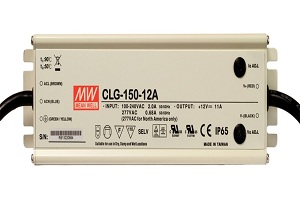LEDs are very different from all over forms of commonly encountered lighting. For the most part, industrial, commercial, and lighting consist of a glass bulb that is full of gas.
Typically, some interaction between electricity inside the bulb and the bulb’s inner components produces light. That is a very, very generalized statement, but even so, it is vastly different from how LED lights work.

LEDs are solid-state lights, also known as SSL, which means they are not bulbs at all. Even the word LED light bulb is a misnomer – and redundant, for that matter. In fact, the “bulb” that sometimes accompanies LEDs is nothing more than a solid piece of plastic or epoxy that covers the semiconductor material that powers the LED’s ability to emit light.
Current can only pass one way across the semiconductor, and when it does, electrons passing over the negative-positive junction of the diode release energy as light. This is very different from the electroluminescence, say, of an incandescent bulb. Because of this, and because of the fact that LEDs operate at much lower voltages and draw far less current than all other light bulbs, they need specialized components and equipment.
Among these is a piece of equipment called an LED driver. All LEDs need some kind of driver to work properly, but many come with them pre-installed. Here’s how they work.
The LED driver is a component of the circuit that regulates the voltage and current supplied to an LED light. Since most outlets will supply a voltage to an LED light that is much higher than they need, the first function of the driver is to convert the higher voltage supplied to the LED to the lower voltage that the circuit needs to operate.
The second critical function of a driver is to convert the current from alternating current to direct current so that the electrical current will flow in the proper direction.
As most power feeds supply AC input, it is necessary to convert this to direct current so the LED will work. It also only allows the LED light to draw the proper current.
All LED products need some kind of driver. Without them, the lights just wouldn’t work. Generally speaking, probably the LED would simply fail to light up, but there is also a chance that the LED would be too bright or too dim if somehow it managed to work at all. It might also produce too much heat.
That’s how and why LED lights some type of LED driver or other as a collection of LED power supplies. Now to the matter of the question of whether or not you need one.
The short answer is that you do because LED bulbs will not function without an LED driver. However, many LED lights and circuits already contain a driver.
For example, any plug and play LED lights must have a driver housed in the assembly or they would not be a true plug and play solution.
To know if you need to get a separate driver, you need either to consult the product information of a given LED or be very familiar with the fixture into which you are going to plug the LED.
Alternatively, you could consult with an expert on Atlanta Light Bulbs’ team about the types of drivers that your LED requires and how to install them. In some cases, you might not even need a separate driver. In others, you might need help to identify what to use.
Visit Atlanta Light Bulbs at AtlantaLightBults.com or give them a call at 1-888-988-2852 today to learn more about drivers and figure out whether you need one or not.
Then, you can pick up what you need right on their site, whether you need constant current drivers, constant voltage drivers, AC LED drivers – whatever you need to ensure your LEDs run properly.
For more information about LED Exit Sign and Retrofit LED Lights Please visit : Atlanta Light Bulbs.

Admin of DigiTech Worlds. Only fresh and unique content posts are allowed. Love to share informative, engaging, and helpful content with users. For more info please visit the contact us page.